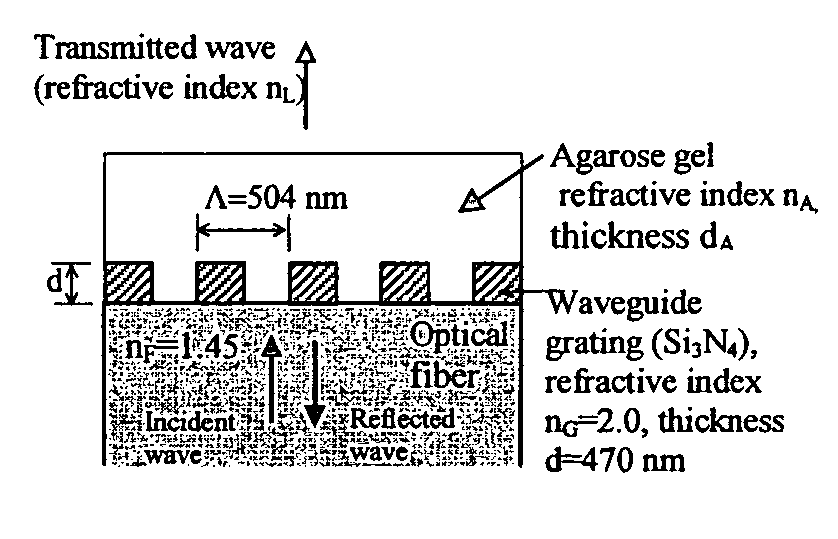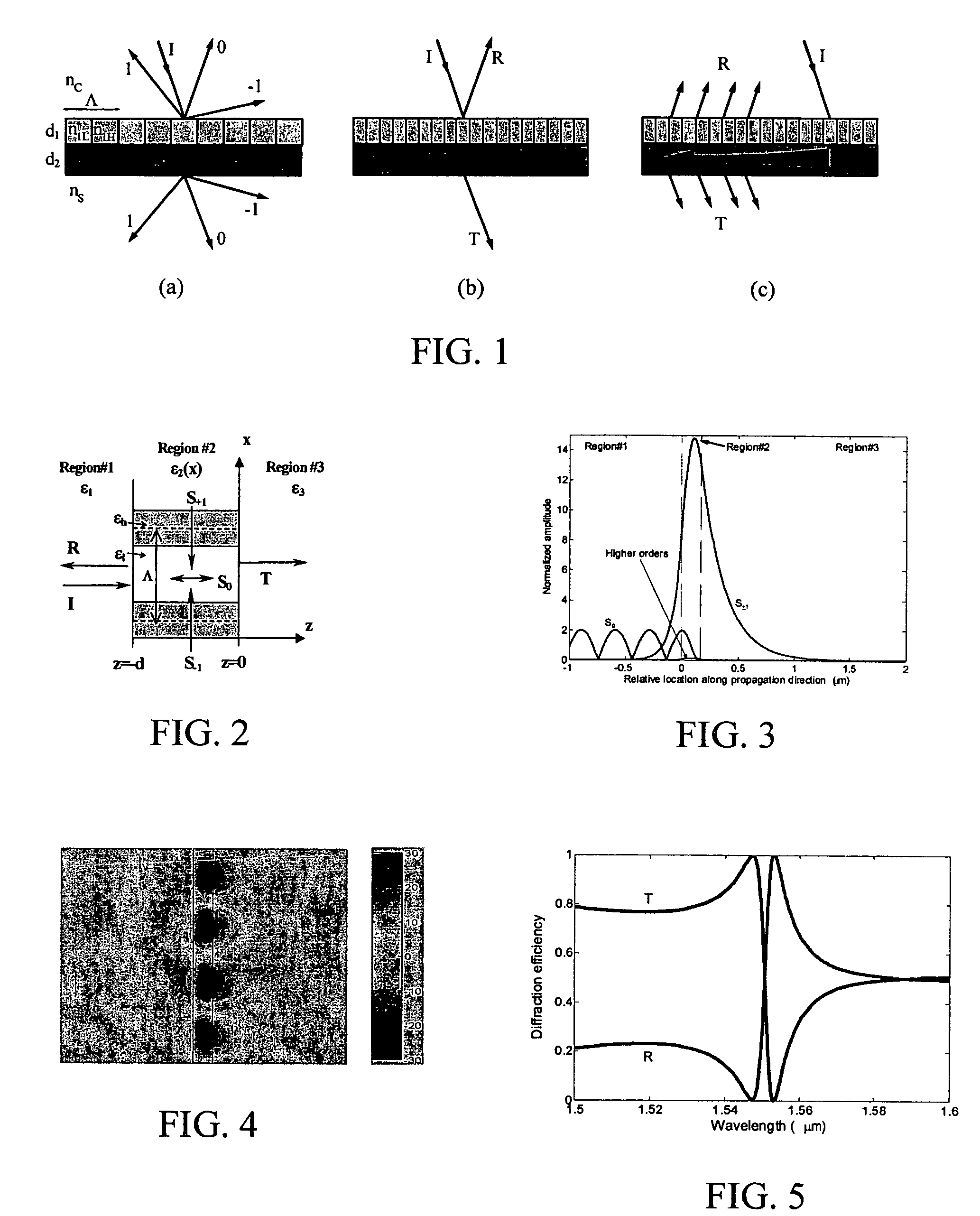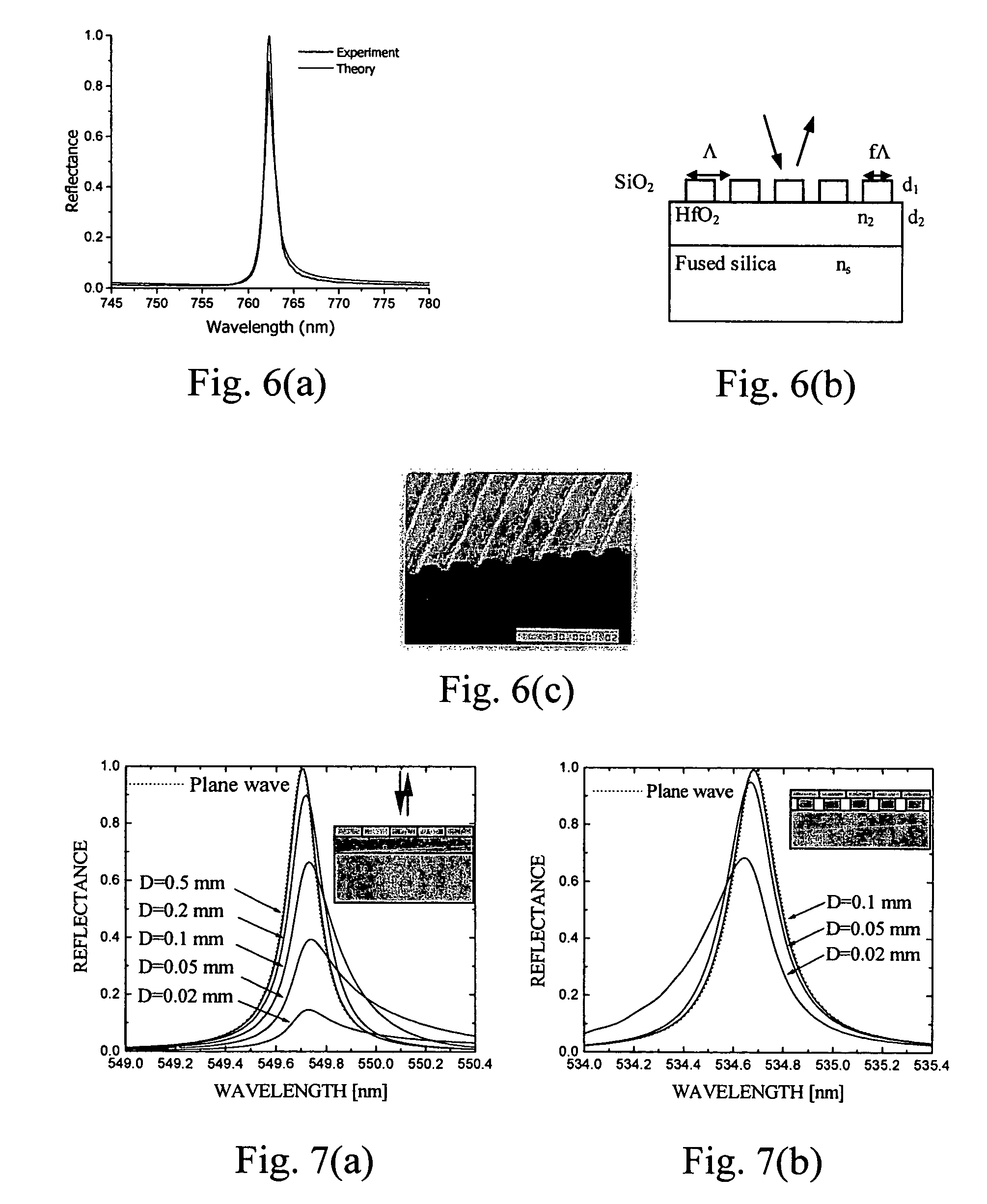Resonant leaky-mode optical devices and associated methods
a leaky-mode optical and leaky-mode technology, applied in the field of optical devices, can solve the problems of interface scattering losses inherent to multi-layered arrangements, large number of layers, and the amount and cost of material required to achieve the desired optical effect, etc., to achieve the effect of broadening the variety of leaky-mode devices, broadening the range of available devices, and enhancing the utility and significance of the disclosed system
- Summary
- Abstract
- Description
- Claims
- Application Information
AI Technical Summary
Benefits of technology
Problems solved by technology
Method used
Image
Examples
example 1
[0071]Referring to FIGS. 10(a) and 10(b), an exemplary bandstop filter with a narrow flattop and a type II profile as shown in FIG. 8(b) is demonstrated. As shown, the spectra pertinent to a bandstop filter with narrow flattop has near 1.8 μm wavelength and an approximate −35 dB transmission dip with bandwidth about 2 nm. The associated flat reflection top is formed by interacting GMR#2 and GMR#3, whose locations are seen in FIG. 10(b). Accordingly, the present exemplary filter can be enabled by interaction of the differentiated TE0 and TE1 modes as discussed / shown with reference to FIGS. 8(a) and 8(b).
[0072]Further, the field profiles associated with this bandstop filter with narrow flattop and type II profile are demonstrated via FIGS. 11(a) to 11(d). FIGS. 11(a) and 11(b) show leaky-mode field profiles associated with GMR#3 and GMR#2, respectively, for a structure with nh=2.8 while navg is kept unchanged at 2.445. GMR#3 can be associated with a TE1-like mode while GMR#2 is associ...
example 2
[0073]Referring to FIGS. 12(a) to 12(c), an exemplary bandstop filter with a wide flattop and a type II profile as shown in FIG. 8(b) is demonstrated. In this example, a bandstop structure with a wide flattop simulating a dielectric stack mirror is obtained. FIG. 12(a) shows the reflectance spectrum and FIG. 12(b) provides an enlarged view of the corresponding transmission spectrum. The corresponding wide angular spectrum associated with the present structure is shown in FIG. 12(c). As with the previous example, the flat reflection band is formed by GMR#2 and GMR#3 yielding a linewidth of approximately 150 nm with central wavelength near λ=1.75 μm.
example 3
[0074]Referring to FIG. 13(a) and 13(b), an exemplary bandpass filter with a type II profile as shown in FIG. 8(b) is demonstrated. As shown, there is a narrow transmission peak at approximately 1.6 μm and a wide transmission band between 1.9 and approximately 2.3 μm as indicated by the corresponding low reflectance region in FIG. 13(a). The background of the narrow transmission peak at approximately 1.6 μm is provided by GMR#2 and GMR#3, while the peak is due to the asymmetrical lineshape associated with GMR#2. The wide transmission band between 1.9 approximately 2.3 μm is formed by the interaction between GMR#1 and GMR#2 shown in FIG. 9.
PUM
 Login to View More
Login to View More Abstract
Description
Claims
Application Information
 Login to View More
Login to View More - R&D
- Intellectual Property
- Life Sciences
- Materials
- Tech Scout
- Unparalleled Data Quality
- Higher Quality Content
- 60% Fewer Hallucinations
Browse by: Latest US Patents, China's latest patents, Technical Efficacy Thesaurus, Application Domain, Technology Topic, Popular Technical Reports.
© 2025 PatSnap. All rights reserved.Legal|Privacy policy|Modern Slavery Act Transparency Statement|Sitemap|About US| Contact US: help@patsnap.com



